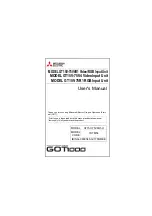
23
from the expected FG. To mention some: The mashing time and
temperature, the lautering, the yeast type, the age and amount
of the yeast, the yeast pitching temperature and the fermenting
temperature. Our best advice to you is that you allow the yeast
to finish fermenting. Most often it will be a drinkable beer. Keep
a journal or log, and learn from your mistakes. Read books and
online sources, and improve the next time you brew.
Chapter 7
WATER CALCUL ATION
Before you start to calculate the required amount of water or
wort you need to know:
• The total grain weight
• The desired amount of wort to ferment
Your recipe is usually tailored to a specific amount of litres of
wort going into the fermenting vessel.
Mash water calculation:
A rule of thumb is to use about 2,8 litres of water pr. kg of malt.
We also need to take into account the volume under the false
bottom or outside the malt pipe. When brewing with the Beer
Brew Automatic™ you should use the following formula:
Formula for model 30:
Use this formula both when brewing with either the
malt basket
or the
false bottom
.
(Grain weight in kg x 2) + 5 =
The amount of mash water, in litres.
Here both the value of 2 and 5 are fixed numbers.
Example brewing with 7 kg of malt:
(7 x 2) + 5 = 19 litres of water
Formula for model 60:
Use this formula when brewing with the
malt basket
.
(Grain weight in kg x 2,5) + 7 =
The amount of mash water, in litres.
Here both the value of 2,5 and 7 are fixed numbers.
Example brewing with 12 kg of malt:
(12 x 2,5) + 7 = 37 litres of water
Formula for model 60:
Use this formula when brewing with the
false bottom
.
(Grain weight in kg x 2,3) + 5 =
The amount of mash water, in litres.
Here both the value of 2,3 and 5 are fixed numbers.
Example brewing with 12 kg of malt:
(12 x 2,3) + 5 = 32,6 litres of water
Calculating the pre-boil amount
Before you can calculate the amount of sparge-water required,
you need to calculate the amount of wort needed at the start of
the boil.
A quick estimation:
Model 30: You need about 30 litres pre-boil to get 25 litres into
the fermenter (loss is about 5 litres).
Model 60: You need about 60 litres pre-boil to get 50 litres
into the fermenter (loss is about 10 litres).
Explanation to amount lost:
You will lose a certain amount of liquid during the boiling and
cooling process:
• Volume lost during boiling due to evaporation, normally at
10% pr hour.
• Volume lost due to shrinkage during cooling of the wort
from 100°C to 20°C, normally at 3%.
• Volume lost due to trub formed in the bottom of the brew
kettle during boiling and cooling, from 2 to 5 litres (or
more), depending on your recipe.
Sparge water calculation:
Use the following formula, by using the previously calculated
numbers:
Preboil grain weight (kg) – mash water amount =
The sparge water amount, in litres.
Note: Volume lost due to grain absorption is approximately 1
litre pr. kg of grain.
Example: a 7 kg recipe designed for 25 litres with 30 litres
preboil volume, and where the mash water amount is 19 litres:
30 + 7 – 19 = 18 litres of sparge water
Note: If your recipe is designed for a lower amount being
fermented, you need to adjust your pre-boil volume
accordingly.
Tip: A certain amount is lost after the fermentation has finished,
due to yeast flocculation. Normally, this will be equal to 1-2 litres in
a 25 litres fermenting vessel.






































